Green onions, also known as scallions, are a must-have in any kitchen garden.
As an avid gardener, I’ve always appreciated how easy and rewarding it is to grow green onions. They are not only a culinary staple, providing a mild, yet distinct flavor to dishes, but also a delight to cultivate.
Perfect for both experienced gardeners and beginners, green onions grow quickly and require minimal space, making them suitable for various gardening setups, from spacious vegetable gardens to small urban balconies.
Let’s explore the benefits and varieties of green onions, and how you can successfully grow them.
Benefits of Growing Green Onions
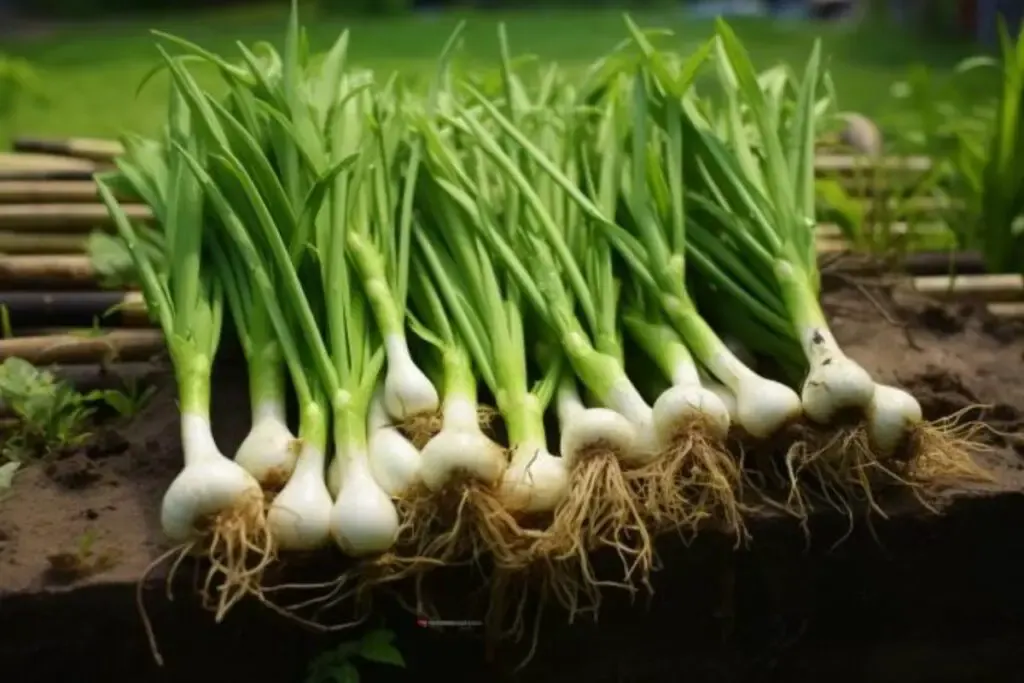
1. Easy and Fast Growing
Green onions are one of the easiest and quickest vegetables to grow. They require very little space and can be harvested within weeks of planting, providing a fast yield.
2. Culinary Versatility
Green onions are a versatile ingredient in the kitchen. They can be used in salads, soups, stir-fries, and as a garnish, adding a fresh and mild onion flavor to various dishes.
3. Continuous Harvest
One of the best things about green onions is that they can be harvested multiple times. They regrow quickly after cutting, offering a continuous supply throughout the growing season.
My Favorite Green Onion Varieties
Green onions come in several varieties, each with its unique characteristics. Here are three of my favorites:
1. White Lisbon
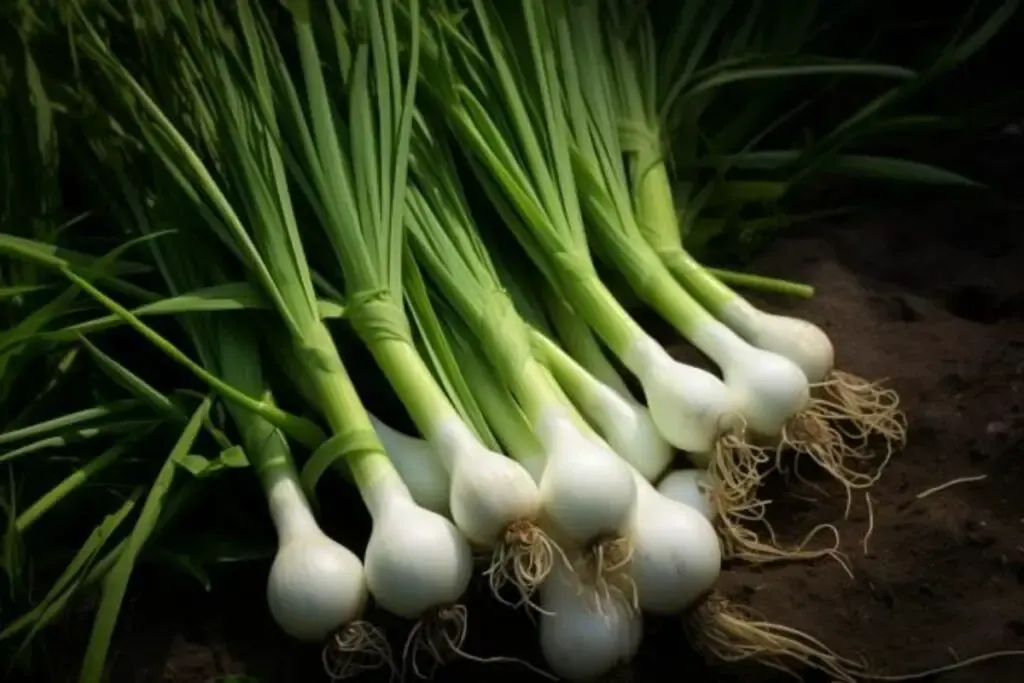
This is a classic green onion variety known for its hardiness and mild flavor. It’s a popular choice for its quick growth and ability to withstand cooler temperatures.
2. Evergreen Hardy White
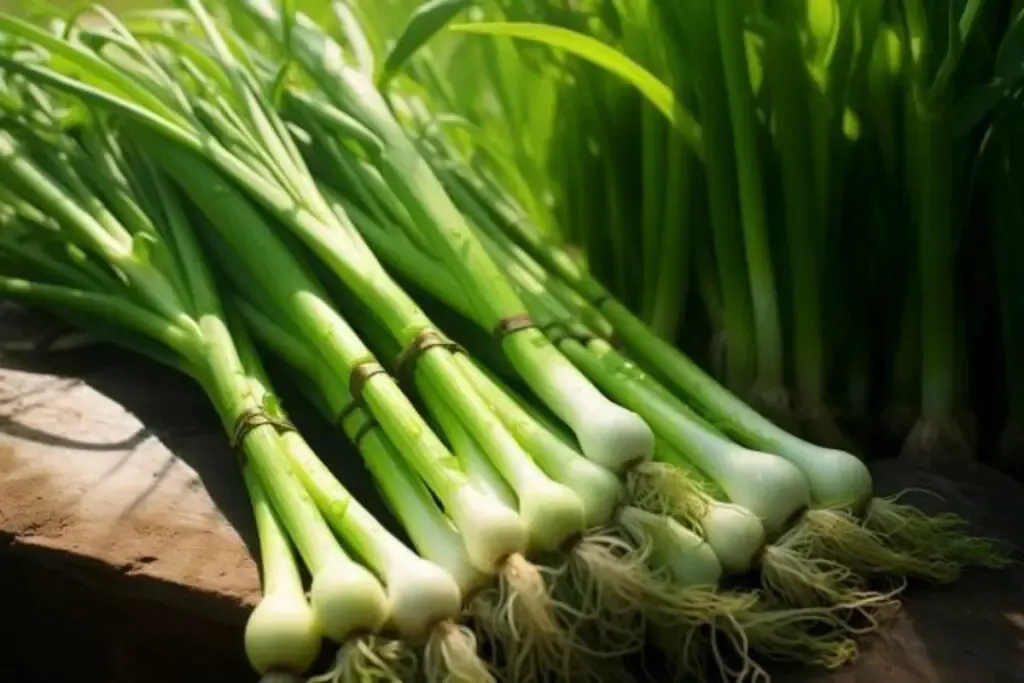
This variety is excellent for colder climates, as it’s very winter-hardy. It has a delicious, strong flavor and is perfect for those who want a more robust onion taste.
3. Red Baron
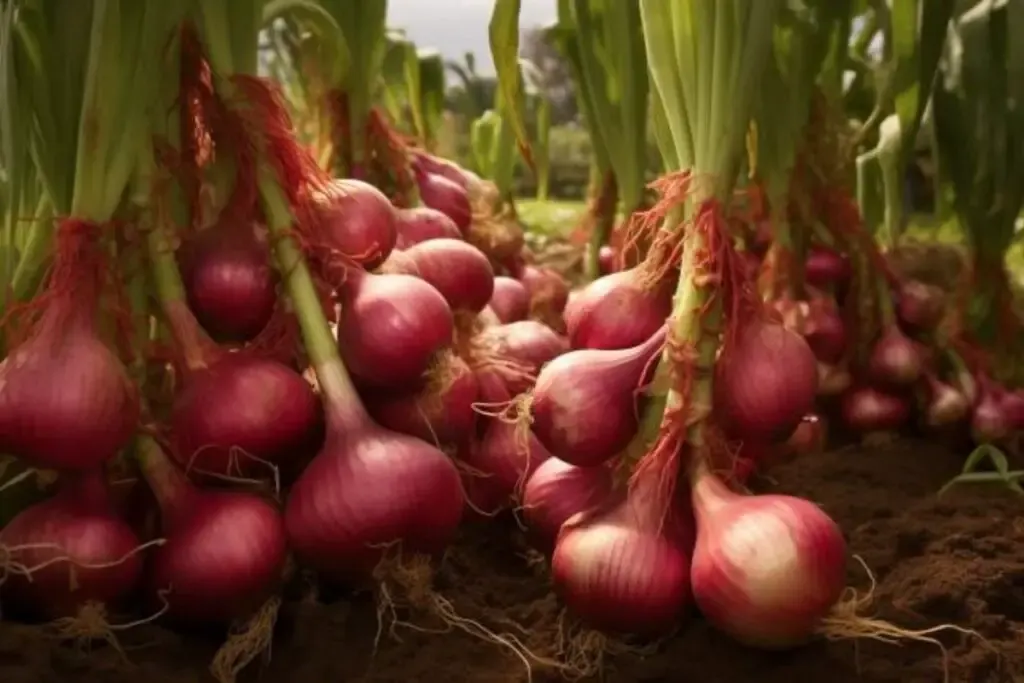
If you’re looking for something a bit different, the Red Baron offers a beautiful red-purple stem and a slightly spicier flavor. It’s a great way to add color and a kick to your dishes.
Green Onion Care
Green onions are a joy to grow due to their low maintenance and simple care requirements. Whether you’re tucking them into a corner of your vegetable garden or growing them in pots on a sunny windowsill, they’re sure to thrive with just a bit of attention.
Let’s look at the key aspects of caring for green onions to ensure a healthy and bountiful crop.
Planting
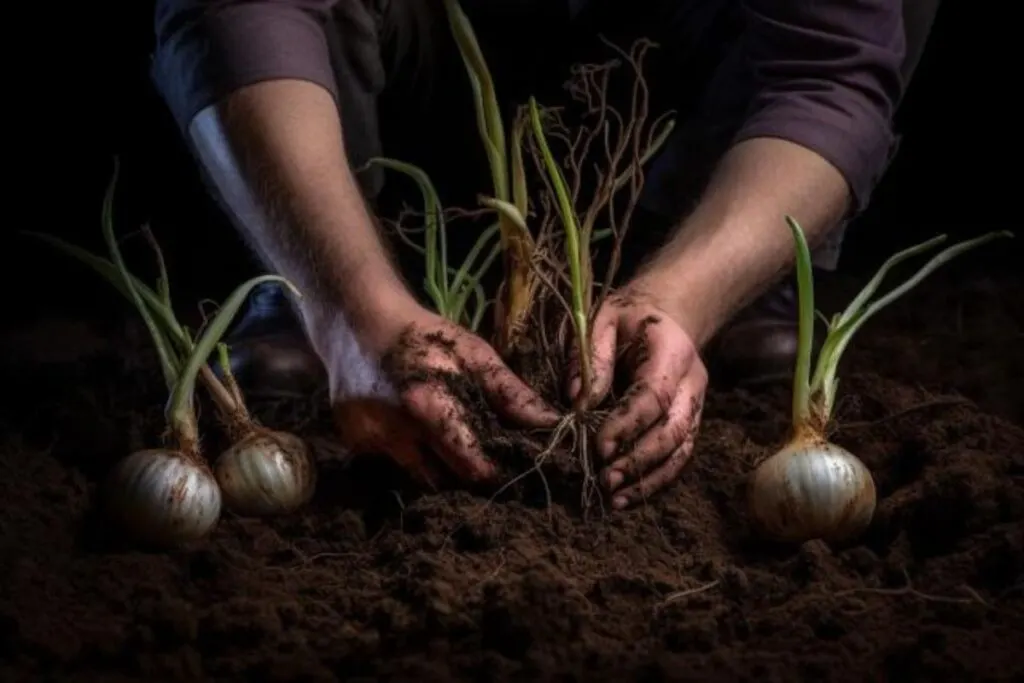
You can start green onions from seeds or sets (small bulbs). If planting seeds, sow them directly in the garden about 1/4 inch deep and 1 inch apart in rows.
If you’re using sets, plant them so that just the tip is above the soil surface. Green onions can also be easily grown from the leftover bulbs of store-bought scallions.
Simply place the roots in a glass of water and then plant them in the soil once they regrow.
Light
Green onions prefer full sun, so choose a spot in your garden that receives at least 6 hours of direct sunlight per day.
They can tolerate partial shade, but the growth might be slower and the stems less robust.
Soil
These onions aren’t fussy about soil and will grow in a range of soil types, as long as it’s well-draining. They do best in a soil with a pH between 6.0 and 7.0.
Working in some organic matter or compost before planting will help improve soil fertility and drainage.
Water
Consistent moisture is important for green onions. Water them regularly to keep the soil evenly moist but not waterlogged.
Overwatering can lead to soggy soil and potentially rot the bulbs, while underwatering can stunt their growth.
Temperature and Humidity
Green onions grow well in a wide range of temperatures, but they prefer cooler weather. They can withstand light frosts, making them suitable for early spring and late fall planting.
They don’t have specific humidity requirements and can thrive in both humid and dry climates.
Fertilizer
If you’ve enriched the soil with compost or organic matter before planting, additional fertilizing might not be necessary.
However, a light application of a balanced, all-purpose fertilizer can be beneficial, especially in poorer soils. Avoid high-nitrogen fertilizers, as these can lead to lush greens but smaller bulbs.
Harvesting Green Onions
Harvesting green onions is as straightforward as their care. You can start harvesting when the plants are about 6 inches tall and the stems are about the thickness of a pencil.
Simply pull the onions straight out of the ground, or cut them at the soil level if you want them to regrow. If you cut them, leave about an inch of the plant in the ground; they will regrow for a second harvest.
Harvesting regularly encourages the plants to produce new shoots, providing you with a continuous supply of fresh green onions.
Pruning
Pruning is not typically necessary for green onions. However, if you notice any yellow or damaged leaves, you can snip these off to keep your plants looking tidy and healthy. This also helps to focus the plant’s energy on producing new and healthy growth.
Propagating
Green onions are incredibly easy to propagate. You can simply save the white bulb ends with the roots intact from your kitchen scraps, place them in a glass of water until the roots grow a bit, and then plant them in the soil.
They’ll start to regrow in no time. This is a great way to get a continuous supply of green onions from just one initial purchase.
How to Grow Green Onions From Seed
Growing green onions from seed is a simple process. Sow the seeds directly in your garden in early spring, about 1/4 inch deep and 1 inch apart.
Keep the soil consistently moist until the seeds germinate. Thin the seedlings if necessary to give each plant enough space to grow. Seeds can also be started indoors and then transplanted outside.
Growing in Pots
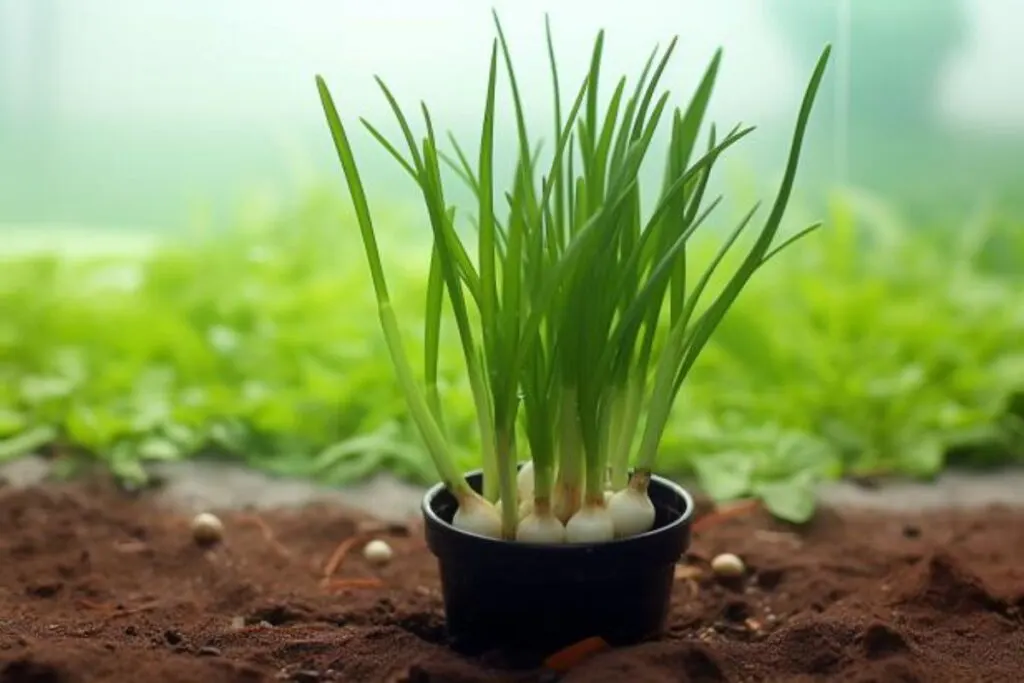
Green onions are well-suited for container gardening. Choose a pot with good drainage that’s at least 6 inches deep. Fill it with a high-quality potting mix.
Plant the seeds or bulbs as you would in the garden. Ensure the pot is placed in a sunny spot and water regularly.
Growing in pots is a great option if you have limited garden space or want to keep a supply of fresh green onions close at hand in your kitchen or on a balcony.
Overwintering
Overwintering green onions is possible, especially in milder climates. If you live in an area with harsh winters, you can protect your green onions with a thick layer of mulch or a cold frame.
Green onions are fairly hardy and can survive light frosts. Some varieties may even continue to grow slowly throughout the winter, providing fresh greenery when most other plants are dormant.
Transplanting
Transplanting green onions is generally straightforward. If you’ve started seeds indoors, you can transplant the seedlings to your garden once they’re a few inches tall.
Harden off the seedlings first by gradually exposing them to outdoor conditions over several days. When transplanting, handle the delicate roots gently to minimize shock and water them well after planting.
Common Pests & Diseases
Green onions are relatively resistant to pests and diseases, but they can occasionally be affected by onion flies, thrips, and root rot.
Practice crop rotation to minimize the risk of soil-borne diseases, and keep the area free of debris to reduce pest problems.
If pests or diseases do appear, treat them promptly with appropriate organic or chemical controls. Growing green onions can be a simple and fulfilling experience.
These resilient and versatile plants are perfect for gardeners of all levels. They require minimal space and care but provide a wealth of flavor for your cooking.
Whether you’re sprinkling them fresh over a salad or adding them to a stir-fry, the joy of using homegrown green onions is unmatched.
So go ahead, plant a few seeds or bulbs, and watch how quickly and effortlessly they liven up both your garden and your meals. Happy gardening!

